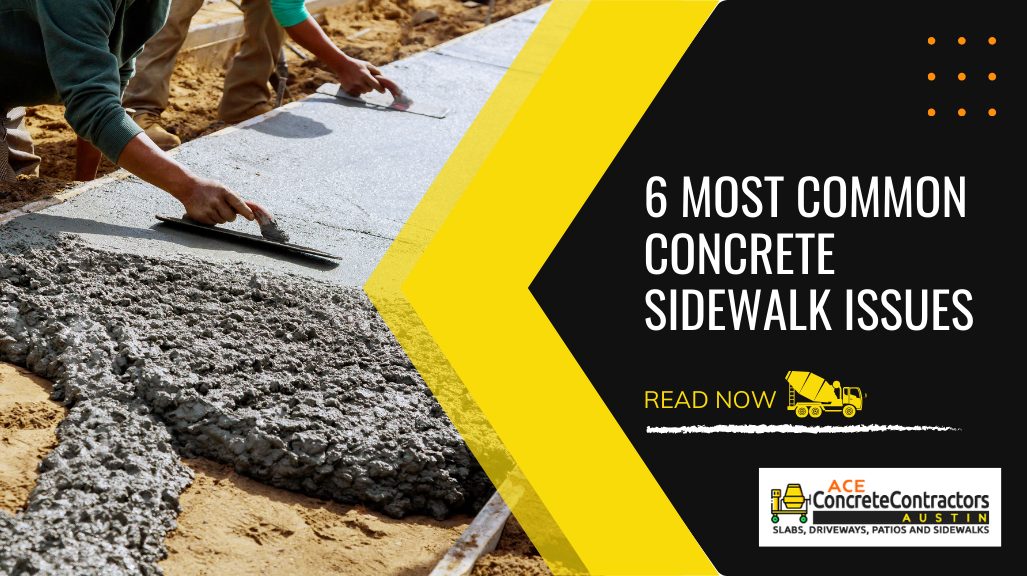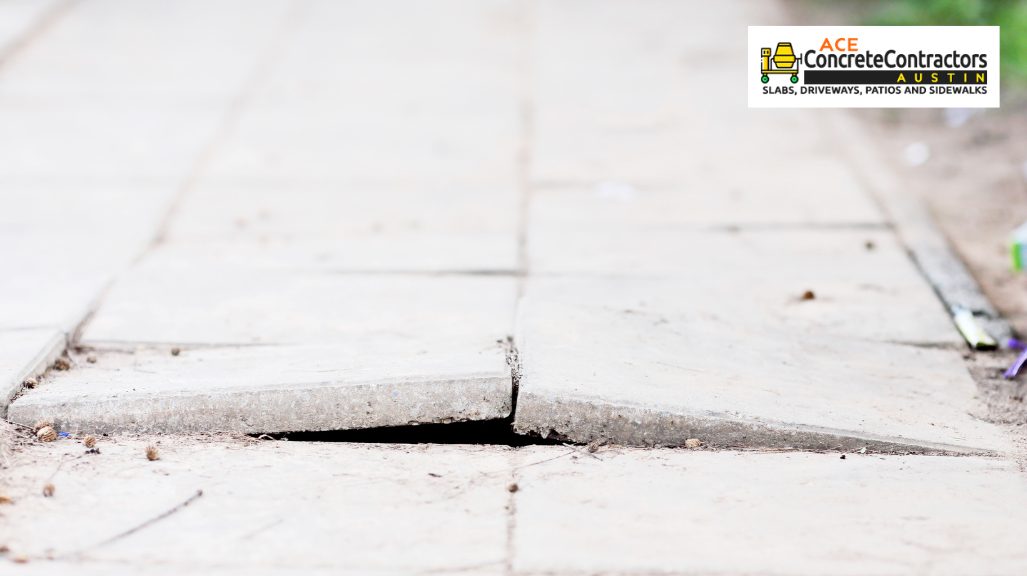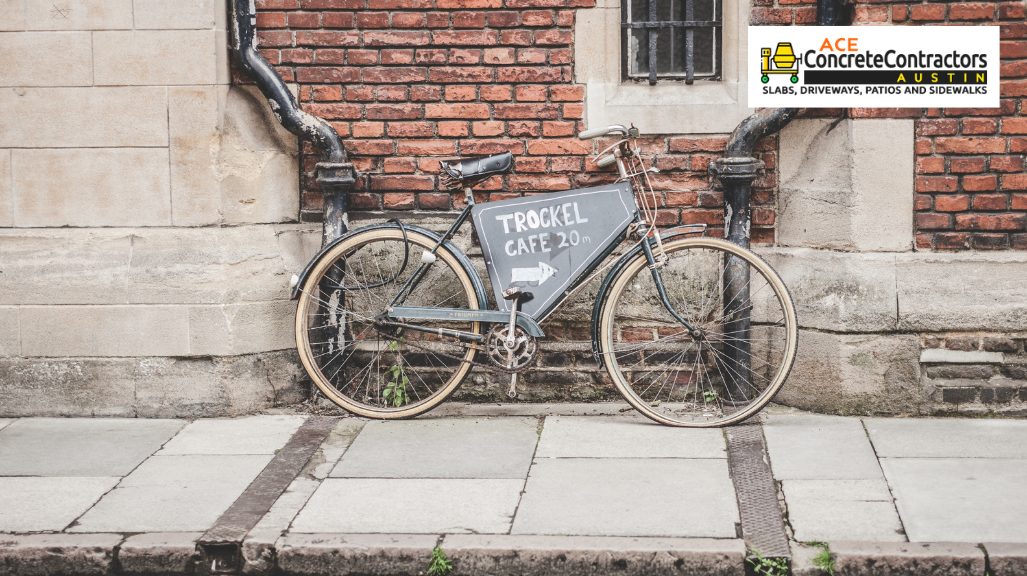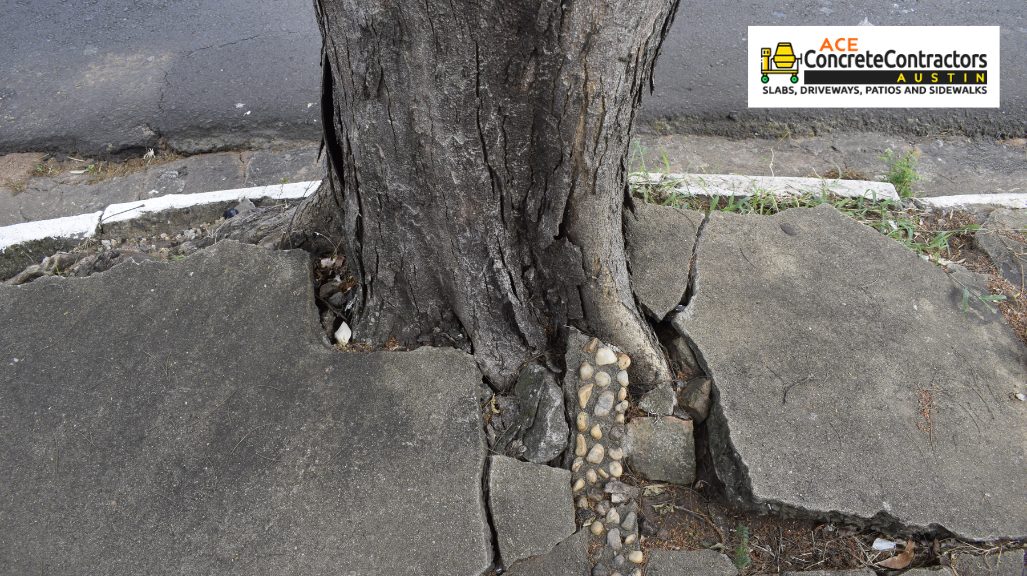
Table of Contents
You step onto your concrete sidewalk, and as you glance down, you notice a network of cracks spider-webbing across its surface. But cracks are just the beginning. Among the common concrete sidewalk issues are fissures that expand, leading to spalling or unevenness, which could pose a safety hazard. The integrity of your sidewalk might also be compromised by drainage issues or joint deterioration. And what about those stealthy tree roots lurking beneath the surface, ready to wreak havoc? Ace Concrete Contractors Austin – Slabs, Driveways, Patios, and Sidewalks specializes in addressing these challenges, offering expert solutions to ensure the longevity and safety of your sidewalk. Stay tuned to uncover the remedies to these common concrete sidewalk issues and how to prevent further damage.
Cracks
Dealing with cracks in your concrete sidewalk can be a common maintenance issue for homeowners. When cracks appear, it’s essential to address them promptly to prevent further damage. Begin by cleaning out the crack using a broom or pressure washer. Next, apply a concrete patch or filler, ensuring it’s smooth and level with the surrounding area.
For larger cracks, consider using a concrete sealant to prevent water from seeping in and causing more extensive issues. Regularly inspect your sidewalk for new cracks, especially after extreme weather conditions.






Spalling
What causes spalling on concrete sidewalks? Spalling occurs when the sidewalk’s surface begins to flake or chip away, exposing the rough aggregate underneath. This issue is commonly caused by freeze-thaw cycles, where water seeps into the concrete, freezes, expands, and thaws, creating pressure that breaks off the surface layer.
Other factors that contribute to spalling include:
- the use of low-quality concrete mixtures,
- improper finishing techniques during installation, and
- the presence of deicing chemicals that can accelerate deterioration.
To prevent spalling, ensure proper drainage from the sidewalk, promptly repair any cracks to prevent water infiltration, and use high-quality concrete with the correct mix proportions and finishing processes.
Uneven Surfaces
Uneven surfaces on concrete sidewalks can pose safety hazards and make walking more accessible for pedestrians. These uneven areas are often caused by tree roots pushing against the concrete, soil erosion underneath the sidewalk, or poor installation.
An uneven sidewalks can lead to tripping hazards and falls, especially for those with mobility challenges. To address this issue, inspecting sidewalks regularly and repairing any uneven surfaces promptly is essential. Concrete leveling techniques, such as mud jacking or polyurethane foam injection, can help restore a smooth and safe walking path. By addressing uneven surfaces promptly, you can ensure the safety and accessibility of sidewalks for all pedestrians.
Next Up: How Weather Affects Concrete Sidewalk Installation in Austin, TX
Drainage Problems
Addressing drainage problems on concrete sidewalks requires proper planning and maintenance to prevent water accumulation and related issues. Poor drainage can lead to water pooling, erosion, and damage to the sidewalk structure. To improve drainage, ensure the sidewalk has a slight slope away from buildings or other structures to allow water to flow naturally. Clogged drains should be cleaned regularly to prevent blockages that can exacerbate drainage problems. Installing proper drainage systems such as French or trench drains can also help redirect water away from the sidewalk surface. By addressing drainage issues promptly and implementing practical solutions, you can prevent water-related damage and prolong the lifespan of your concrete sidewalk.
Joint Deterioration
Deteriorating joints in concrete sidewalks can lead to structural issues and safety hazards if addressed. When the joints between concrete slabs degrade due to age, weather, or poor installation, water can seep in, causing erosion and weakening the sidewalk’s foundation.
As a result, the concrete slabs may shift, sink, or become uneven, creating tripping hazards for pedestrians. If left unresolved, the deteriorating joints can also lead to larger cracks and further damage, requiring costly repairs.
Regular inspection and maintenance of sidewalk joints are crucial to prevent these issues. Sealing the joints with appropriate materials can help protect the sidewalk from water infiltration and prolong its lifespan, ensuring a safer walking environment for everyone.
Tree Root Damage
Tree roots can disrupt and damage concrete sidewalks, posing risks to pedestrians and causing structural issues if improperly managed. As trees grow, their roots can push against the sidewalk, leading to cracks and uneven surfaces. These disruptions not only create tripping hazards but can also compromise the integrity of the sidewalk.
To address tree root damage, consider installing barriers or selecting trees with non-invasive root systems when planting near sidewalks. Regularly inspect the area for any signs of root encroachment and promptly address any issues to prevent further damage. Proper maintenance and early intervention can help mitigate the impact of tree roots on concrete sidewalks and ensure the safety of pedestrians.
Frequently Asked Questions
How Can I Prevent Vandalism on Concrete Sidewalks?
Several strategies can be implemented to prevent vandalism on concrete sidewalks. One approach is to keep the areas well-lit, as this can deter vandals who prefer to operate in darkness. Another effective measure is to install security cameras that can act as a deterrent and provide evidence if vandalism does occur. Additionally, considering the application of anti-graffiti coatings can make it easier to clean off any defacement.
Regularly inspecting and cleaning the sidewalks is also crucial in deterring vandals. Promptly addressing any signs of vandalism sends a message that the area is actively monitored and maintained. Lastly, collaborating with the community is essential. Encouraging residents to report suspicious activity can help identify potential vandals and prevent future incidents.
Are There Eco-Friendly Solutions for Repairing Concrete?
If you’re looking to repair concrete in an eco-friendly way, consider using permeable concrete, recycled materials, or geopolymer concrete.
These alternatives can help reduce environmental impact while maintaining the integrity of your sidewalk.
What Is the Average Lifespan of a Concrete Sidewalk?
Concrete sidewalks have an average lifespan of 20-40 years. Factors like weather, maintenance, and usage affect durability. Regular inspections and timely repairs can prolong its life. Consider eco-friendly solutions for repair and maintenance.
Can Decorative Elements Be Added to Concrete Sidewalks?
You can add decorative elements to concrete sidewalks. Stamps, stains, and textures can enhance the look of your sidewalk. These additions provide versatility and aesthetic appeal, making your sidewalk stand out.
Do Weather Conditions Affect Concrete Sidewalk Maintenance?
Weather conditions significantly impact concrete sidewalk maintenance. Harsh winters can cause cracks and heaving, while excessive rain may lead to erosion. Regular inspections and prompt repairs ensure your sidewalk remains safe and functional.
Conclusion
To ensure the longevity and safety of your concrete sidewalk, it’s crucial to address common issues promptly. Common issues include cracks, spalling, uneven surfaces, drainage problems, joint deterioration, and tree root damage. Regular inspection and timely repairs can prevent further damage and maintain the integrity of your sidewalk. By staying proactive and addressing these issues promptly, you can enjoy a well-maintained and safe sidewalk for years to come.
